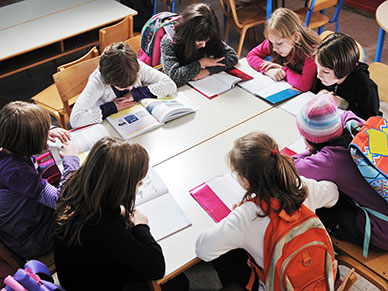Education savings accounts could help Georgia lawmakers ease overcrowding in public schools, an ongoing challenge for some school districts. Legislators are considering bills that would allow students to use an account to choose how and where they learn, modeled after the accounts in Arizona, Florida, Mississippi, Tennessee, and Nevada.
Under the proposed legislation, and as described on this blog, the state deposits a portion of a child’s funds from the state formula into a private account that parents use to buy educational products and services for their children. Parents can choose different learning options like online classes, personal tutors, and private school tuition simultaneously, customizing a child’s education to meet their needs.
Some Georgia parents have complained of surging enrollment in public schools in recent years. Between 2014 and 2016, Georgia public school enrollment increased 7 percent or 117,000 students, according to state and federal sources. Decatur’s increases have been dramatic: District schools experienced a 123 percent increase over the past decade. Recent reports of overcrowding have also come from Horry County, Dalton, and DeKalb. In some cases, students have been forced to sit on the floor of school buses on the way to school due to class reassignments.
In Dalton, a Daily Citizen headline said residents are imploring lawmakers to “do something” about student overcrowding. Data from states where lawmakers have enacted education savings accounts demonstrate that student participation can help relieve the pressure on schools that see rapid enrollment growth. In Arizona, 3,500 are using accounts today (approximately 1 percent of the eligible student population). In Florida, 7,000 students are using the accounts. These modest figures can help with overcrowding issues.
Estimates that 156,000 Georgia students would use the accounts after 3 years and cost taxpayers $700 million bears no resemblance to student participation or funding in other states where students are using the accounts. This estimate is equivalent to having all the students leave DeKalb County and Atlanta Public Schools.
Even Georgia’s existing private school choice options which have been in place for many years have not grown this fast. Georgia’s private school scholarships for children with special needs have been available for nearly a decade, and fewer than 4,000 students are using a scholarship. Another Georgia private school scholarship offering is available to nearly all state students, and 13,000 children are using a scholarship (less than 1 percent of students in the state)—a figure that has held steady since 2012.
Meanwhile, lawmakers should consider how education savings accounts can be an efficient use of taxpayer money. According to the legislation, each Georgia account would be worth $4,500. The average student attending a traditional public school in Georgia is funded at $10,300. Average per student funding figures indicate Decatur’s 4,662 students—an all-time high—require more than $48 million from taxpayers annually. Their education savings accounts would use less than half this amount.
Estimates that education savings accounts would syphon students and funds from Georgia schools do not correspond with existing evidence. But the accounts can be a solution for Georgia lawmakers to moderate crowded classrooms while also providing families more educational options.
For more information about ESAs in Georgia, click here.
